Putting care home interior design under the spotlight
Positive psychology within care homes owes a great deal to the aesthetics of each accommodation’s interior, as well as the quality of care provision itself, according to interior design expert Niki Schäfer.
 Founder of interior design company Dwell-Being, Niki Schäfer, has focused her career upon utilising domestic environments to encourage positive mental connections, and advises that a range of different spaces are needed in order to achieve a home that is satisfying and contributes to mental well-being.
Founder of interior design company Dwell-Being, Niki Schäfer, has focused her career upon utilising domestic environments to encourage positive mental connections, and advises that a range of different spaces are needed in order to achieve a home that is satisfying and contributes to mental well-being.
Ms Schäfer explains: “Understanding and appreciating space in a home is essential. We need space to think clearly, we need space to cook a meal, we need space to breathe and get away from it all, we need head space, me space and we certainly need space for our shoes!”
Surrey home West Hall, from the portfolio of care provider Anchor, is a modern example of a care home created with a strong focus on interior design and all that can be achieved by combining pleasant layouts with an appreciation for the challenges of caring.

Realising the West Hall vision, engineering and design consultants Atkins worked side-by-side with dementia specialists to in order to assess how a satisfying design could be achieved that also supported independent living.
Associate architect Duncan Cryer comments: “West Hall has been carefully designed to be fully inclusive, with the ability to adapt to cater for the changing needs of Anchor’s customers.
“This luxury care home looks and feels like a comfortable high end residence with all the essential functional features to enable Anchor’s staff to deliver the high standards of care residents need.”
A unique design saw the £30m home recognised at the National Dementia Care Awards 2012, where the team were presented with the award of Best Interior Dementia Design.

Home manager Dacre Lassauniere recognised the national accolade as a massive achievement for such a young care home, saying:
“We know the design is such a positive enabling environment for older people but to get official recognition is marvellous. It is amazing to receive our first national award after being open only three months.
“The pioneering design is matched by the staff’s commitment to provide high quality care. We are all so happy.
“There are more than 15,000 people in Surrey with dementia and this figure is set to increase by 30 per cent by 2021 so the top notch services West Hall provides will help many people with the condition.”
Tailored to the challenges of dementia, the West Hall interior includes many specialist features, such as unique patterned tactile panels, colour schemes proven to help adults with memory loss, bedframe sensors to alert staff to falls, transparent panelled cupboards to help residents identify personal belongings and memory boxes to help individuals personalise their surroundings.
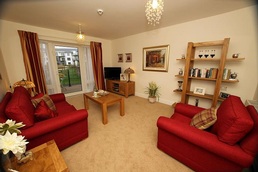
Ms Schäfer believes such lessons can also be applied to non-residential environments, as far as the lifestyle of those with care needs are concerned, saying: “If the children have left home, the house which has been dominated by the family way of life for probably more than two decades can all of a sudden feel like a quiet shell particularly if the mother has been a ‘stay at home mum’. It can feel liberating but can also often feel lonely and empty and can involve quite a process of reflection and style rediscovery, before they can look at the house that will be with them for the next exciting chapter in their lives.
“Some of us plan on living beyond our 100th year and therefore 50 is really only half way through life so it can be a wonderful time for change! The house does perhaps in time need to reflect changes in current and forthcoming lifestyle though especially if it is a large investment such as a new home build or complete refurbishment. I have a client who is designing a lift into their home despite being very agile and healthy, but they know there will come a time for the lift rather than the stairs. Getting this balance right is key. Understanding what your future holds is exciting but it needs to be practical too.”
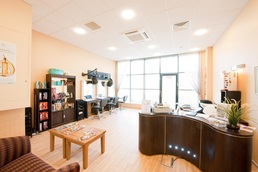
Extra care villages represent something of a midpoint between residential and social settings. Providers like the ExtraCare Charitable Trust, which are currently developing several extra care sites in the Midlands, aim to create environments that blend homely qualities with support for a versatile lifestyle, at the same time as being ideal for professional care practice where it is required.
Birmingham councillor Steve Bedser is one visitor to be impressed by the capability of these new extra care sites and their innovative design aspects, announcing his support for more villages to be green-lit.
On visiting Pannel Croft Village, which opened in 2012, he commented: “I'm so excited about Pannel Croft opening because it’s the second of five ExtraCare Villages coming to Birmingham. We’re already talking about number six, and I've told people I won't be bored until at least 20! “It’s not about people going into a home, it’s about people moving into their own home in a vibrant village community, where they can enjoy peace of mind.”
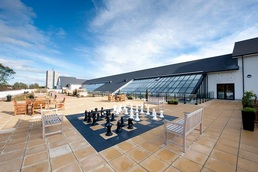
Nick Abbey, chief executive of The ExtraCare Charitable Trust, says that the village’s interiors have been designed to exceed the expectations of what visitors might expect. Flexible to full and shared ownership, the site is one of several developed to incorporate an extensive criteria, including craft rooms, guest suites, beauty salons, IT areas, multi-faith worship rooms, quiet lounges and well-being suites, all of which are designed to practically support independent living and personal satisfaction in one’s surroundings.
On the atmosphere of the site he comments: “I love it when people come in and say it’s noisy. We’ve got lots of people in our villages getting on with life and having a good time!
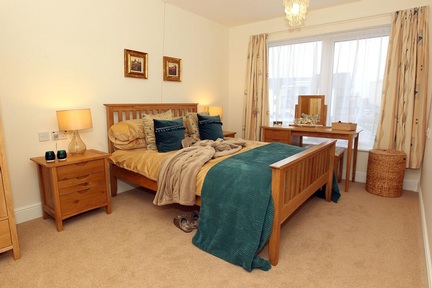
“The facilities will be enjoyed not just by people who live in the Village but also by people in the local area as well.
“There really is no need to be lonely in one of our villages. If you want company, you can come downstairs and get a cup of coffee and there will be people coming along that you know and feel safe. Isolation is a side-effect of living longer for many people, but it’s not going to be like that here.”

The ability to complement a vibrant living atmosphere is something Ms Schäfer sees as essential. She continues, “Your home environment is more than just four walls and a lick of paint. It can dictate how you feel. It can boost your self-esteem; it can calm you down, or make you more productive. Our environment is so much more than the latest wallpaper or a stunning pair of curtains. How is your home space working for you – does it give you the breathing space you so desperately crave? Does it feel organised and efficient and equally comforting and secure? Does it reflect your personality and who you really are? If the answer is no to any of these questions, your home could be affecting your well-being.”
Ms Schäfer concludes: “Harnessing the importance of our spaces and learning how to make them beautiful and appealing to everyone who uses them is an art and a science. After all, our environment is so much more than the colour of the walls and what furniture we choose. It’s only when we’re in an environment that’s perfectly suited to us, that we can truly be ourselves.”
Latest Features News
 25-Nov-19
2019 Election: Boris Johnson leaves social care in 'too difficult box' but Labour vows to end 'crisis'
25-Nov-19
2019 Election: Boris Johnson leaves social care in 'too difficult box' but Labour vows to end 'crisis'
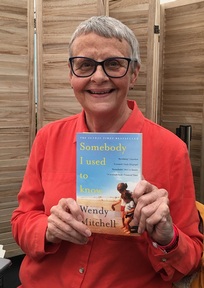 18-Oct-19
Podcast: Wendy Mitchell and dementia: 'My biggest fear is not knowing who my daughters are'
18-Oct-19
Podcast: Wendy Mitchell and dementia: 'My biggest fear is not knowing who my daughters are'
 27-Sep-19
Exclusive: Care minister backs care workers' call for time off to grieve and attend funerals
27-Sep-19
Exclusive: Care minister backs care workers' call for time off to grieve and attend funerals
 19-Sep-19
Podcast: Gyles Brandreth says poetry helps ward off dementia
19-Sep-19
Podcast: Gyles Brandreth says poetry helps ward off dementia
 30-Aug-19
Edinburgh Fringe funnyman joins comics facing toughest audience at care home gig
30-Aug-19
Edinburgh Fringe funnyman joins comics facing toughest audience at care home gig